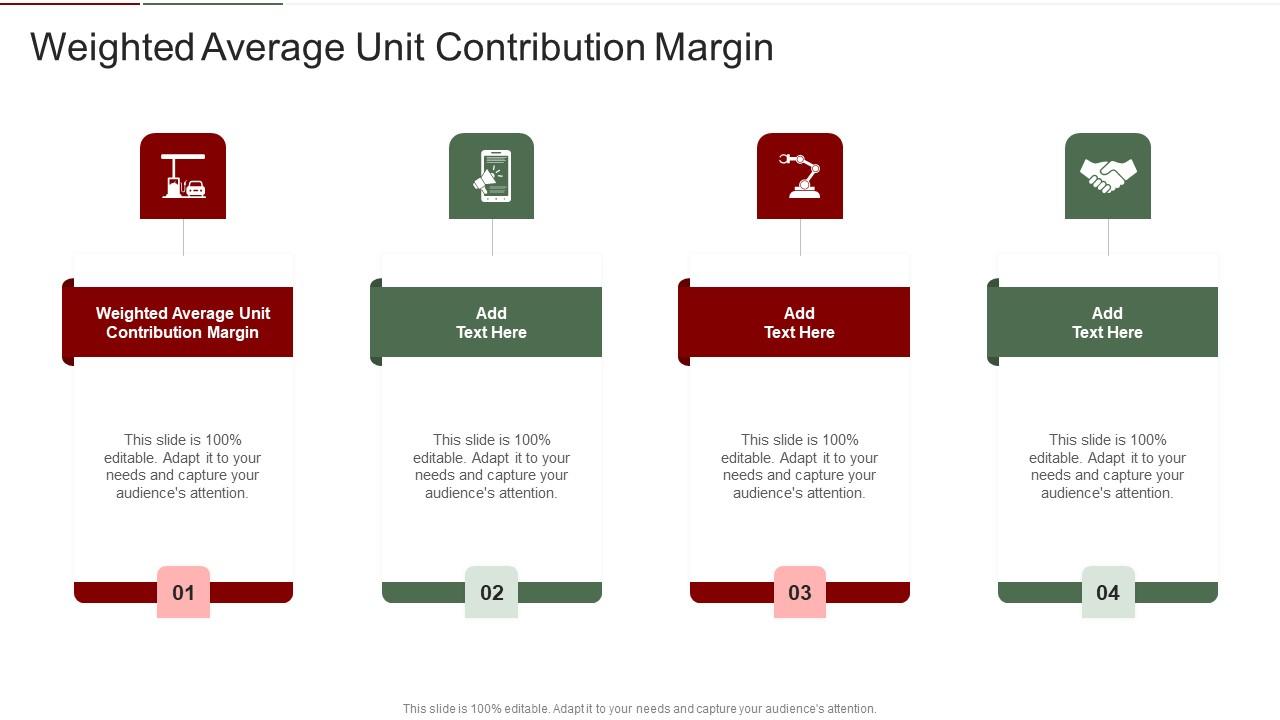
The use of the weighted average contribution margin also carries some limitations. Thus sales revenue can drop by $555,555 per year before the company begins to incur a loss. The table should show the cumulative revenue, the contribution earned from each product and the cumulative profit/(loss). If it sells exactly 10,000 units it will break-even, and if it sells more than 10,000 units, it will make a profit.
Related AccountingTools Courses

Consider Sally’s sales of small candles from above and add in the sale of 20 large candles at $20 each with variable costs of $9. The contribution margin is sales price of $20 minus variable costs of $9, or $11. Combine business management vs accounting this with small candle sales of 50 units and a $4 contribution margin. To finish using the WACM formula, divide your total contribution margin by the total number of products you expect to sell to calculate the WACM.
- Low values of contribution margins can be observed in the labor-intensive industry sectors like manufacturing as the variable costs are higher, while high values of contribution margins are prevalent in the capital-intensive sectors.
- Such decision-making is common to companies that manufacture a diversified portfolio of products, and management must allocate available resources in the most efficient manner to products with the highest profit potential.
- Break-even analysis is an important technique used to determine the budget a business needs to remain financially healthy, but it can be difficult to apply accurately when dealing with multiple products.
- Buying items such as machinery is a typical example of a fixed cost, specifically a one-time fixed cost.
- For example, Company A may know that the sales price for product X in a particular year is going to be in the region of $50 and its variable costs are approximately $30.
What is the Weighted Average Contribution Margin in Break-Even Analysis?
Very low or negative contribution margin values indicate economically nonviable products whose manufacturing and sales eat up a large portion of the revenues. However, this strategy could ultimately backfire, and hurt profits if customers are unwilling to pay the higher price. Having a good feel for the weighted average contribution margin and how it will change over time gives companies an advantage when evaluating potential investments or carefully allocating resources.
What Is a Markup on a Product?
The weighted average contribution margin is crucial in accounting, as it allows businesses to understand their costs and revenues better. To address this limitation, businesses can consider conducting sensitivity analyses to assess the impact of varying sales compositions on overall performance metrics. One limitation of Weighted Average Contribution Margin is its exclusion of fixed costs from the calculation, which can lead to an incomplete picture of the company’s total profitability and cost structure. This process is crucial for businesses to determine the overall profitability of their product mix.
However, we can work out how many sales the business needs to achieve in order to make a profit and this is where CVP analysis begins. The contribution margin for a single product is deducting the variable costs from the sales or revenue figure. The break-even point is the stage where the company makes no profit or losses. Estimating the break-even point for a multiple product facility can take different methods.
Understand how the weighted average contribution margin can impact business decisions
In order to draw the graph, it is therefore necessary to work out the C/S ratio of each product being sold before ranking the products in order of profitability. As well as ascertaining the break-even point, there are other routine calculations that it is just as important to understand. For example, a business may want to know how many items it must sell in order to attain a target profit. While management accounting information can’t really help much with the crystal ball, it can be of use in providing the answers to questions about the consequences of different courses of action.
Every product that a company manufactures or every service a company provides will have a unique contribution margin per unit. In these examples, the contribution margin per unit was calculated in dollars per unit, but another way to calculate contribution margin is as a ratio (percentage). However, ink pen production will be impossible without the manufacturing machine which comes at a fixed cost of $10,000. This cost of the machine represents a fixed cost (and not a variable cost) as its charges do not increase based on the units produced. Such fixed costs are not considered in the contribution margin calculations. After you have the raw data, calculating the contribution margin per each product is an easy step.
As you will learn in future chapters, in order for businesses to remain profitable, it is important for managers to understand how to measure and manage fixed and variable costs for decision-making. In this chapter, we begin examining the relationship among sales volume, fixed costs, variable costs, and profit in decision-making. We will discuss how to use the concepts of fixed and variable costs and their relationship to profit to determine the sales needed to break even or to reach a desired profit.
Tinggalkan Balasan